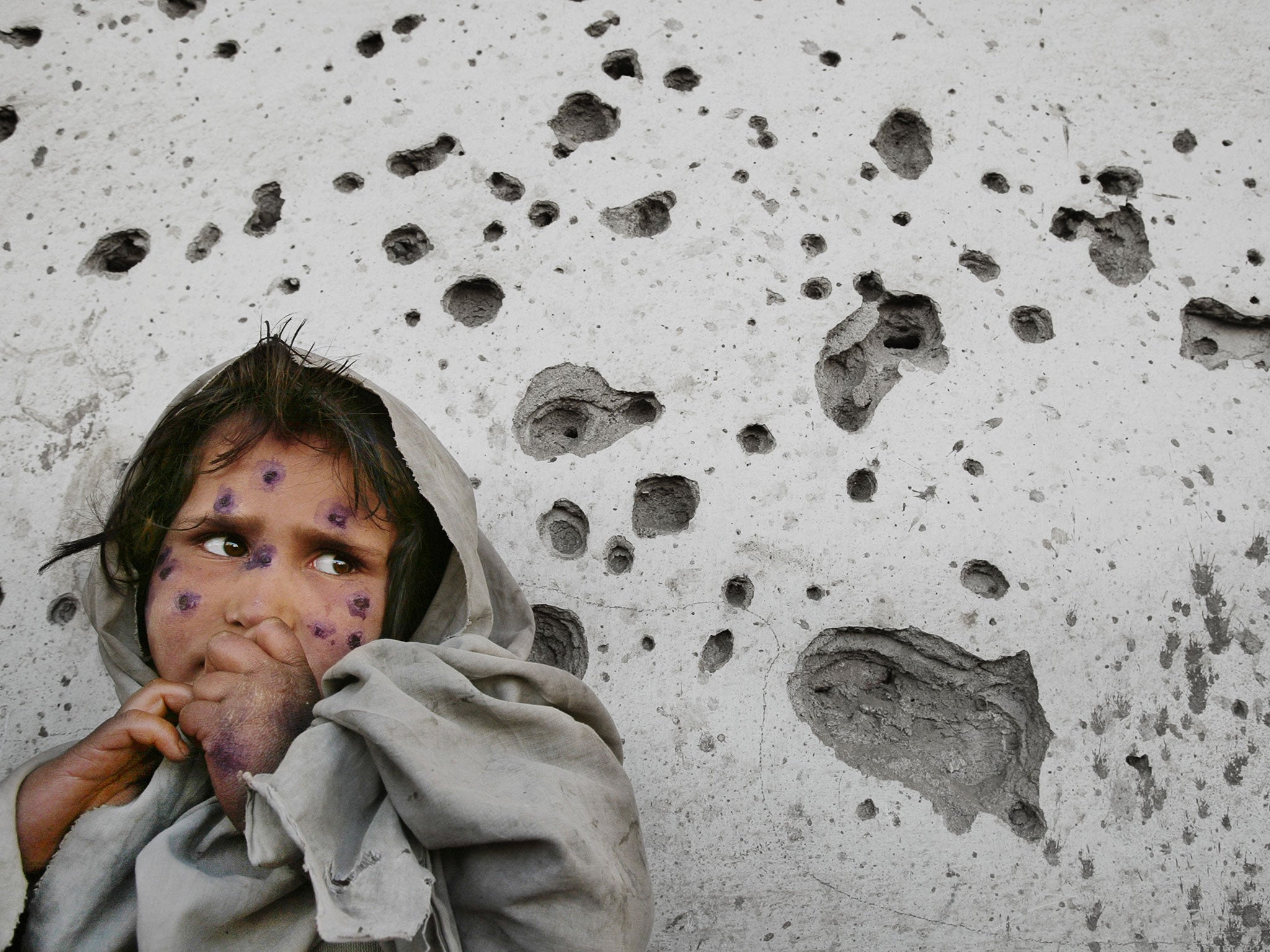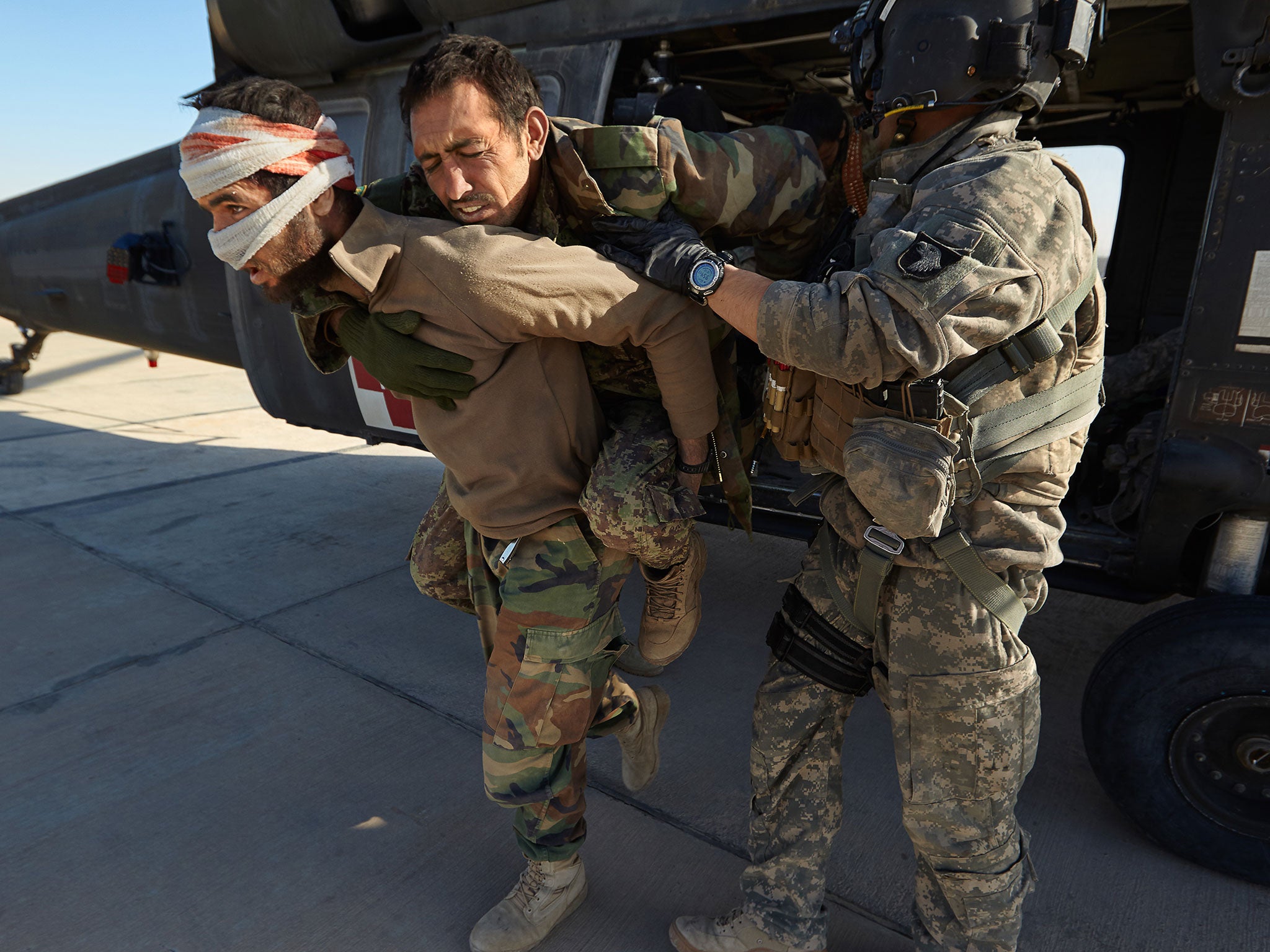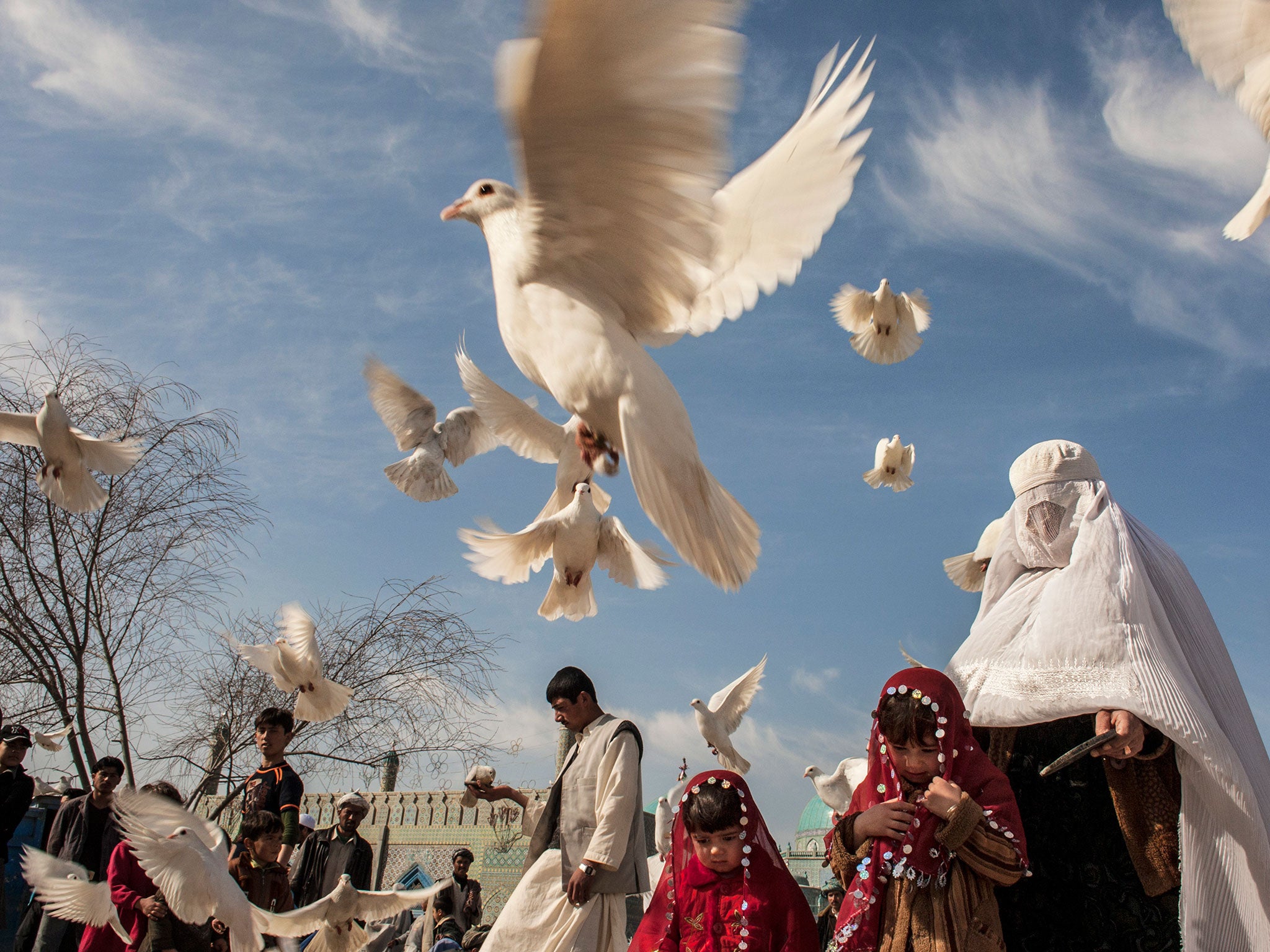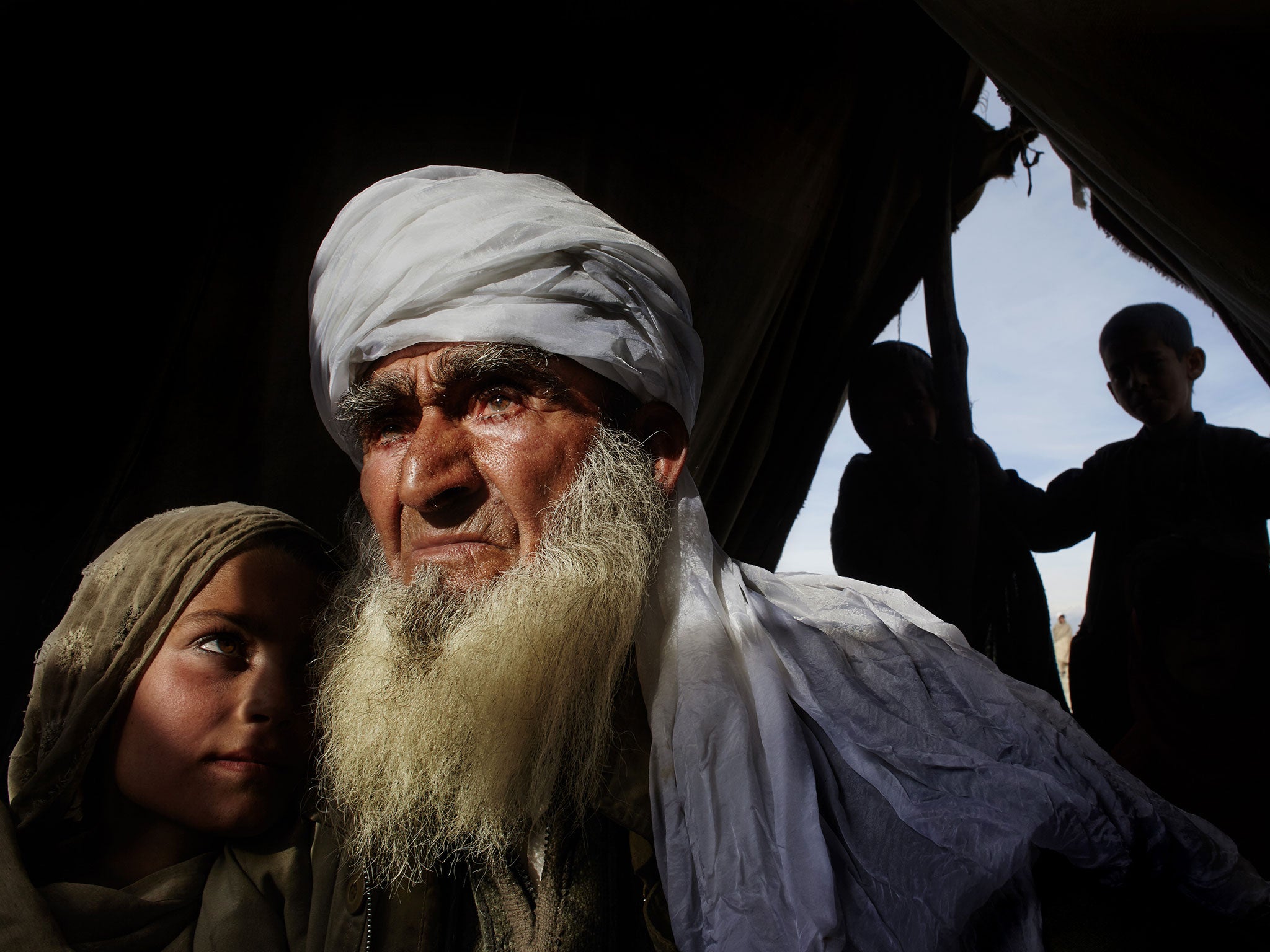Afghanistan War: Photographer Paula Bronstein captures incredible images chronicling 15 years of conflict
'My book is called Between Hope and Fear, but at the moment there’s not much hope'

Your support helps us to tell the story
From reproductive rights to climate change to Big Tech, The Independent is on the ground when the story is developing. Whether it's investigating the financials of Elon Musk's pro-Trump PAC or producing our latest documentary, 'The A Word', which shines a light on the American women fighting for reproductive rights, we know how important it is to parse out the facts from the messaging.
At such a critical moment in US history, we need reporters on the ground. Your donation allows us to keep sending journalists to speak to both sides of the story.
The Independent is trusted by Americans across the entire political spectrum. And unlike many other quality news outlets, we choose not to lock Americans out of our reporting and analysis with paywalls. We believe quality journalism should be available to everyone, paid for by those who can afford it.
Your support makes all the difference.Fifteen years after US-led forces invaded Afghanistan in the hunt for Osama bin Laden, the country remains at war.
More than 5,000 civilians have been killed and injured this year alone as Isis and al-Qaeda compete with the Taliban in a bloody insurgency against the Afghan government and “invader” forces.
The UK has lost almost 500 troops in the conflict, which it entered alongside 17 other countries in the wake of the September 11 attacks, with the stated aim of bringing down terror groups, driving out the Taliban, quashing the drug trade and furthering democracy and development.
But the extremists remain, opium production has increased to one of the highest levels ever recorded and 2.7 million refugees have fled, becoming the largest nationality – behind Syria – making desperate sea journeys to Europe this year.
Paula Bronstein, an award-winning American photographer, has recorded the evolution of the war through her lens, arriving as the Taliban was driven out of its last city stronghold.
Speaking to The Independent, she described witnessing the devastation wreaked by air strikes carried out by the US and UK as part of “Operation Enduring Freedom”.
“Everywhere you looked there was destruction from the bombing,” Ms Bronstein said. “It was definitely a revenge attack.
“For the Americans it was seen as essential to do something. They had hit the heart of the US, they had attacked the Twin Towers.
“The death toll and the destruction…the US had never felt anything like that.”
The photographer was part of a convoy of journalists travelling to report on the coalition victory in the city, which had been the Taliban’s capital.
“The atmosphere was just weird – people were trying to cope with the fact that the whole of the south of their country had been bombed,” Ms Bronstein added.
“The American military will always try to be as proud as they can, they really believed they were protecting their country.”
She has lost count of the visits paid to Afghanistan, returning as recently as this spring to report on the ongoing effects of the conflict.
Her work, which has been collected into a book entitled Afghanistan: Between Hope and Fear, has frequently put her in the line of fire.
She recalls landing in Taliban-controlled poppy fields with teams evacuating soldiers from the frontlines, seeing dying troops and bodies removed with horrific wounds.
And the remnants of fighting continue to maim and injure today, with Ms Bronstein witnessing the civilian victims of mines in Lashkargah earlier this year.
“It’s was spring and where there’s been lots of rain and snow melting, the mines rise to the surface,” she explained.
“Then the locals will accidentally dig them up or step on them. People get chewed up by the bombs, limbs are just gone. War is war and it’s hell.”
One of Ms Bronstein’s friends, the British photographer Giles Duley, narrowly survived stepping on a mine while covering the conflict in 2010 – having to have both legs and one arm amputated.

At least 29 journalists have been killed in Afghanistan since 1992, including David Gilkey and Zabihullah Tamanna from National Public Radio (NPR) in June, on their first day embedded with the Afghan army.
Ms Bronstein was covering national elections in 2014 when she found herself just metres away from a Taliban terror attack on a guest house in Kabul.
She was just about to leave for a Thanksgiving dinner with American friends from where she was staying at the Wall Street Journal’s bureau when the shooting started.
“It was just around the corner and it was deafening, and because it was at night you couldn’t see anything,” the photographer said.
“We all went down to a safe room in the building and waited for hours, we could hear the militants battling with police. It was a little too close for comfort.”
Ms Bronstein calls Afghanistan the “forgotten war”, sidelined in the wake of the 2003 Iraq invasion and now a minor distraction for world powers preoccupied by the meteoric rise of Isis.
She said: “When I was in Afghanistan I found the fact that George W Bush could create this war, then let it disappear into the sidelines shocking, his legacy is very, very negative.”
But amid the chaos and destruction, Ms Bronstein’s photography shows the Afghan people continuing their everyday lives, with women being allowed to vote for the first time in decades and children being sent to school.

“There are so many positive stories – they aren’t all negative,” the photographer said, recalling local bodybuilding competitions and festivals, or families on days out at the country’s first national park.
British and American combat troops officially withdrew from Afghanistan in 2014, but thousands of international remain in the country as it continues to struggle for stability.
Among them are 500 British personnel, with David Cameron increasing the size of the mission earlier this year to help train Afghan forces.
The so-called Islamic State is now making its presence felt in the country with a series of bloody attacks by its “Khorasan Province”, jostling for supremacy against the Taliban and al-Qaeda.
“Extremist groups are battling for supremacy – it’s terrible,” Ms Bronstein added. “I wouldn’t say there’s anything going in the right direction of peace.”
She is particularly critical of endemic corruption in Afghanistan, seeing government and charity funding being siphoned off as Taliban leaders build gaudy “poppy palaces”.
At a conference on Wednesday, world powers pledged $15bn (£12bn) for Afghanistan to fund the country over the next four years and attempt to revive a stalled peace process.
The UK has pledged a £750m package of “long term support”, including funding for health, education, employment and mine clearance projects.

The International Development Secretary Priti Patel, said: “Afghanistan has seen real progress recently but the international community must show it is willing to stay the course.
“We cannot allow Afghanistan’s development to be undone and the country to roll back into conflict.”
But United Nations Secretary-General Ban Ki-moon said the continuing violence has caused a record number of civilian casualties and people displaced.
This week civilians were fleeing renewed fighting between government forces and the Taliban in the city of Kunduz, with the UN recording more than 1.1 million people forced to flee their homes by the conflict.
A record 5,100 civilian casualties, including 1,600 deaths, were recorded in the first half of this year, with 11,000 people killed and injured in attacks, mine blasts and fighting between insurgents and government forces, which spread to 31 of the country's 34 provinces in 2015.
For Ms Bronstein, the initial optimism of the Afghan invasion has faded away.
“My book is called Between Hope and Fear, but at the moment there’s not much hope,” she said.
“Afghans fear for the future – what is going to happen now?”
Join our commenting forum
Join thought-provoking conversations, follow other Independent readers and see their replies
Comments